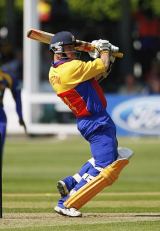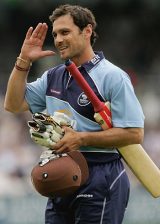The New South Wales allrounder
Shane Lee played 45 ODIs for Australia between 1995-96 and 2000-01, before being forced to retire in 2003, aged only 29, with a knee injury. He was in the squad for the 1996 and 1999 World Cups, although he did not play in the final of either. He played alongside his younger brother,
Brett Lee, in 17 of those matches. Shane is one of 22 people who have played ODIs for Australia without getting into the Test team. The full list, which includes a few players who may yet win a Test cap, is: Glenn Bishop (2 ODIs), Ryan Campbell (2), Mark Cosgrove (3), Michael Di Venuto (9), Brett Dorey (4), Shaun Graf (11), Brad Haddin (18), Ian Harvey (73), James Hopes (9), Mitchell Johnson (7), Shane Lee (45), Mick Lewis (7), Rod McCurdy (11), Ken MacLeay (16), Jimmy Maher (26), Graeme Porter (2), Jamie Siddons (1), Anthony Stuart (3), Glenn Trimble (2), Cameron White (5), Brad Young (6) and Andrew Zesers (2).



